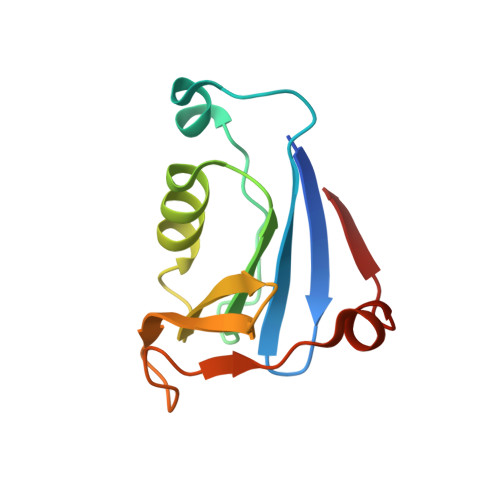Csx3 is a cyclic oligonucleotide phosphodiesterase associated with type III CRISPR-Cas that degrades the second messenger cA 4 .
Brown, S., Gauvin, C.C., Charbonneau, A.A., Burman, N., Lawrence, C.M.(2020) J Biol Chem 295: 14963-14972
- PubMed: 32826317
- DOI: https://doi.org/10.1074/jbc.RA120.014099
- Primary Citation of Related Structures:
6VJG - PubMed Abstract:
Cas10 is the signature gene for type III CRISPR-Cas surveillance complexes. Unlike type I and type II systems, type III systems do not require a protospacer adjacent motif and target nascent RNA associated with transcriptionally active DNA. Further, target RNA recognition activates the cyclase domain of Cas10, resulting in the synthesis of cyclic oligoadenylate second messengers. These second messengers are recognized by ancillary Cas proteins harboring CRISPR-associated Rossmann fold (CARF) domains and regulate the activities of these proteins in response to invading nucleic acid. Csx3 is a distant member of the CARF domain superfamily previously characterized as a Mn 2+ -dependent deadenylation exoribonuclease. However, its specific role in CRISPR-Cas defense remains to be determined. Here we show that Csx3 is strongly associated with type III systems and that Csx3 binds cyclic tetra-adenylate (cA 4 ) second messenger with high affinity. Further, Csx3 harbors cyclic oligonucleotide phosphodiesterase activity that quickly degrades this cA 4 signal. In addition, structural analysis identifies core elements that define the CARF domain fold, and the mechanistic basis for ring nuclease activity is discussed. Overall, the work suggests that Csx3 functions within CRISPR-Cas as a counterbalance to Cas10 to regulate the duration and amplitude of the cA 4 signal, providing an off ramp from the programmed cell death pathway in cells that successfully cure viral infection.
Organizational Affiliation:
Department of Chemistry and Biochemistry, Montana State University, Bozeman, Montana, USA.













